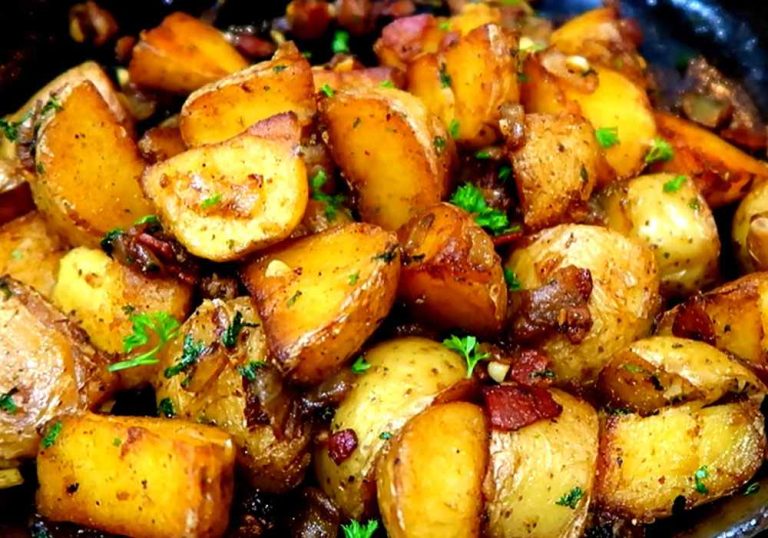As a general rule, you should not eat potatoes with their skins on, as they contain natural toxins. Under certain circumstances, however, consumption is harmless – we will explain when this is the case.
Potatoes belong to the nightshade family. As such, they contain toxins that protect them from predators and act as a natural defense against fungal and insect infestations. The two glycoalkaloids solanine and chaconine contained in potatoes are mainly located directly under the skin. That’s why you shouldn’t eat potatoes with their skin on – this is also recommended by the Baden-Württemberg State Center for Nutrition.

Unripe potatoes with green spots or sprouted potatoes in particular have a high content of toxins. Other plant parts of the potato also contain large amounts of solanine. If potatoes are damaged on the surface or stored incorrectly, this encourages the formation of toxins.
By the way: To store potatoes, you should choose a dark, cool and dry place – preferably with a temperature between four and six degrees Celsius.
In addition, potatoes are often treated with germination or mold inhibitors so that they can be stored more easily and can be offered all year round. Although there are regulated maximum values for such substances, you should not eat treated potatoes with their skins and instead use organic potatoes. These must not be treated with germ or mold inhibitors.
Even if the skin contains healthy minerals and secondary plant substances: the peeled potato is usually the better choice. You can find tips for peeling potatoes in our guide. However, if you can be sure that the glycoalkaloid content is low – that is, the potato is ripe, fresh and undamaged – there is nothing wrong with eating the skin from time to time.
Eating potatoes with their skins: you have to pay attention to this
If you want to eat potatoes with skin, you should consider the following points:
Make sure your potatoes have been stored properly. Even better: reach for fresh potatoes.
If they have a lot of green spots or sprouts, you shouldn’t eat potatoes with their skins on. However, you can generously cut out isolated green areas.
Use potatoes with no surface damage.
Grab local organic potatoes and buy them in small quantities so you don’t have to store them for long.
By the way: Potatoes are in season in Germany from June to the end of October. So it is easy to get hold of fresh potatoes at this time.
Potato varieties that are commercially available from us must not exceed a certain maximum value of solanine (200 milligrams per kilogram of fresh mass). On average, cultivated varieties contain around 18 to 94 milligrams of solanine per kilogram, according to the Baden-Württemberg State Center for Nutrition. It is therefore generally harmless to eat ripe and properly stored potatoes with their skins on. Imported potatoes, on the other hand, can have higher solanine levels, so it’s best to use local produce.
Pregnant women and children should always peel potatoes

According to the Baden-Württemberg State Center for Nutrition, mild solanine poisoning occurs from around 400 milligrams per kilogram of potatoes. The first symptoms such as nausea, headache, diarrhea and a sore throat can then be felt within 24 hours. In children, however, significantly smaller amounts of solanine can be dangerous due to their lower body weight. Children and pregnant women should therefore never eat potatoes with their skins on.
By the way: Glycoalkaloids are water-soluble but heat-resistant. This means that some of the toxins are released into the water during cooking and are not rendered harmless by heat alone. You should therefore always throw away the cooking water from unpeeled potatoes.









